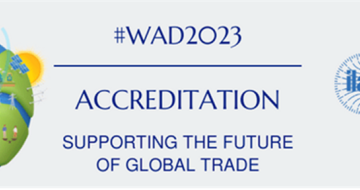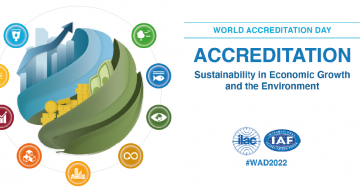Table of Contents
The European Union (EU) has requirements that many products must meet before they can be placed on the EU market. For some, an additional obligation to affix a CE marking is required.
The CE marking is a declaration by the manufacturer that a product meets the health, safety and environmental requirements of the product legislation in force at European level. In some cases, the manufacturer can assess whether their product meets the legal requirements, in other cases, they have to rely on a conformity assessment body (notified body) to do so.
Product requirements are standards and technical specifications that are valid in all the EU for certain product categories. They must meet EU regulations before they can be freely placed on the EU market.
European legislation imposes essential requirements on products sold in the EU to ensure that they meet stringent health, safety and environmental standards. These standards include:
- the product itself, e.g. flammability, electrical and hygiene properties
- the production process
- the product performance, such as energy efficiency
Most of the time, the legislation defines the results the products must achieve or which hazards must be avoided. But the law does not impose specific technical solutions. Harmonised standards can sometimes help to prove that a product satisfies the legislation.
Conformity assessment is the process carried out by the manufacturer to demonstrate whether a product meets certain requirements. A product is subject to a conformity assessment during both the design and production phases.
The manufacturer is responsible for the product, even if they subcontract the design or production. Information on the conformity assessment must be included in the technical documentation.
Some product requirements are not harmonised in the EU. This means that they may vary in each EU country. In such cases, a product must only comply with the rules of the EU country in which it is marketed. The product can also then be sold on the market in other Member States according to the principle of mutual recognition.
These are voluntary standards that manufacturers can use to demonstrate conformity with the essential requirements of the legislation. If a manufacturer follows a harmonised standard for the design and production of a product, there is a presumption of conformity for the requirements covered by this standard. Although CE marking is mandatory, the use of harmonised standards is voluntary. Other ways may also be chosen to meet the essential requirements.
The CE marking is a declaration by the manufacturer that a product meets the health, safety and environmental requirements of the current European product legislation. It is proof that the product has gone through the relevant conformity assessment procedure.
CE marking is mandatory for certain categories of product sold in the EU, even if they are manufactured elsewhere. The CE marking cannot be affixed to products for which the European regulations do not provide for CE marking.
The CE marking does not indicate whether a product has been manufactured in the European Union. But it does offer a certain guarantee of safety, provided that the marking is properly affixed. In addition to the safety aspect, the CE marking also plays a role in certain legislation that impose performance requirements, such as the Construction Products Regulations. In applying the CE marking, the manufacturer declares that the product achieves the stated performances.
The CE marking is only mandatory for products for which there are European specifications requiring its affixation.
Several European specifications are required for some products. A product must then comply with all relevant requirements before the CE marking can be applied. However, the CE marking cannot be affixed to products without EU specifications or for which the EU specifications do not prescribe it.
Manufacturers must affix a CE marking to 25 product categories before they can be distributed on the European market:
- Safety devices and systems for areas with an explosion risk
- Construction products
- Pressure equipment
- Simple pressure vessels
- Ecodesign for energy products
- Low voltage electrical equipment
- Electromagnetic compatibility
- Explosives for civil use
- Cableway installations for the transport of persons
- Lifts
- Gas appliances
- Telecommunication and radiocommunication terminal equipment
- Machines
- Medical devices
- In vitro diagnostic medical devices
- Active implantable medical devices
- Measuring instruments
- Fertilisers
- Non-automatic weighing instruments
- Unmanned aircraft (drones)
- Personal protective equipment
- Pleasure boats
- Pyrotechnic items
- "RoHS: Hazardous substances in electrical and electronic equipment
- Toys
The CE marking is mandatory in all countries of the European Economic Area (EEA). This means the European Union Member States plus Norway, Iceland and Liechtenstein. Turkey also requires the CE marking. Manufacturers of goods produced in these countries and importers of goods produced in other countries confirm that the goods bearing the CE marking comply with EU standards.
The manufacturer must ensure that its products meet the requirements of all applicable legislation. It must carry out a conformity assessment and - if required by European legislation - involve a notified body.
In addition, the manufacturer must keep a technical dossier of their products and show it to the market surveillance authorities of the country in which the products are marketed. In a declaration of conformity, the manufacturer declares that its products comply with all the applicable legislation. Finally, the manufacturer affixes the CE marking to the product.
It is the responsibility of the manufacturer to:
- carry out the conformity assessment,
- set up the technical file,
- issue the EU declaration of conformity,
- affix the CE marking on the product.
Distributors must check for the presence of the CE marking and the necessary documentation. If the product is imported from a third country, the importer must check whether the manufacturer outside the EU has taken the necessary steps and whether the documentation is available on request.
If importers or distributors place products on the market under their own name, they assume the liability of the manufacturer. In this case, they must have sufficient information about the design and manufacture of the product, as they are legally liable for the application of the CE marking.
For some products, it is mandatory for the economic operator established in the EU to be stated as liable. This operator must keep documentation on the conformity of the products and cooperate with the market surveillance authorities. Manufacturers established outside the EU can also therefore appoint a representative to represent them in the EU and ensure that they comply with European legislation.
More information on the obligations of manufacturers, importers and distributors is available on the European Commission's website.
An EU Declaration of Conformity is a mandatory document that has to be drawn up and signed by the manufacturer or its authorised representative. It states that the product meets EU requirements.
For imported products, the importer must ensure that the EU declaration of conformity exists and keep it (and in some cases ensure that it accompanies the product). The EU declaration of conformity requires a translation into the language(s) of the European country in which the product is sold.
The technical documentation is drawn up by the manufacturer and contains all the information that proves that the product meets the applicable requirements. This is necessary to demonstrate that the EU declaration of conformity is correct and to provide a product bearing a CE marking.
The manufacturer or its representative in the EU - if the manufacturer is established outside the EU - must keep the technical documentation and hand it over to the national authorities for inspection upon request.
In many cases, it is sufficient for the manufacturer to carry out a conformity procedure in accordance with the applicable legislation. For high-risk products, the manufacturer must involve a Notified Body (NOBO) in the assessment.
The list of notified bodies can be found on the NANDO website of the European Commission.
The CE marking must be visibly, legibly and indelibly affixed to the product. It must comprise the letters "CE", all of the same height (at least 5 mm) (unless otherwise specified in the relevant product requirements).
Where applicable, the CE marking is followed by the registration number of the notified body involved in the conformity assessment.
If the CE marking cannot be affixed to the product, it may be placed on the packaging (if present) or on the accompanying documents.
If the product has to comply with several directives/regulations, each requiring a CE marking, it is imperative to indicate in the accompanying documents that the product complies with all the directives/regulations.
At national level in the EU countries, one or more control bodies or inspection services are designated for each legislation or product group. An overview of all market surveillance authorities in the EU countries divided by product group can be found on the website of the European Commission.
In Belgium, market surveillance on European harmonisation legislation is mainly a federal competence. This does not preclude the regions from providing input. Within the federal authority, market surveillance competences are divided between the federal public services, the agencies and the institutes, in accordance with the harmonised legislation.
FPS Economy – Directorate-General Energy
Gas appliances
Safety equipment and systems for potential use in explosive atmospheres (ATEX)
Electromagnetic compatibility (EMC)
Energy labelling
Low voltage electrical equipment (LVD)
FPS Economy – Directorate-General Quality and Safety
Unmanned Aircraft (UA)
Pyrotechnics
Lifts
Pressure Equipment (PED)
Personal Protective Equipment (PPE)
Explosives for Civilian Use
Cableway Systems for the Transport of Persons
Non Automatic Weighing Instruments (NAWI)
Measuring Instruments (MID)
Toys
Machines
Construction Products
Single Pressure Vessels (SPVD)
FPS Public Health, Safety of the Food Chain and Environment
Ecodesign for energy products
Fertilisers
Hazardous substances in electrical and electronic equipment (ROHS)
Federal Agency for Medicines and Health Products (FAMHP)
Medical devices
In vitro diagnostic medical devices
Active implantable medical devices
Belgian Institute for Postal Services and Telecommunications (BIPT)
Telecommunication and radiocommunication terminal equipment
FPS Mobility
Pleasure boats
After Brexit, the UK introduced the UKCA marking as an indication of conformity equivalent to the CE marking. It is mandatory for the relevant goods sold in Great Britain. UKCA marking came into effect on 1 January 2021. To give companies time to adapt to the new requirements, CE marking can still be used in most cases until 1 January 2023. The website of the UK authority contains more information on this subject.
Since, on the basis of the Northern Ireland Protocol, Northern Ireland has remained aligned with the European internal market, the CE marking remains mandatory for products placed on the market there. The UKCA marking can also be used in parallel, but is not mandatory. Goods for sale in the UK can (and usually will) bear both markings.
The existence of a China Export label is a common misconception. The logo (which looks almost like the CE marking, but with slightly different dimensions) is intended to indicate that a product has been exported from China. It is generally accepted that this is done intentionally to induce European consumers to buy a product that in fact does not meet the requirements for the CE marking.
The European Commission has stated that it is not aware of any Chinese export marking. However, the Commission acknowledges that there have been cases in which the CE marking was abused. Similarly, there are cases where the product still met the requirements, but the CE marking did not comply with the official dimensions and proportions.

